The largest nuclear bomb ever created, Tsar Bomba was detonated by the Soviet Union above the Arctic archipelago of Novaya Zemlya on October 31, 1961.
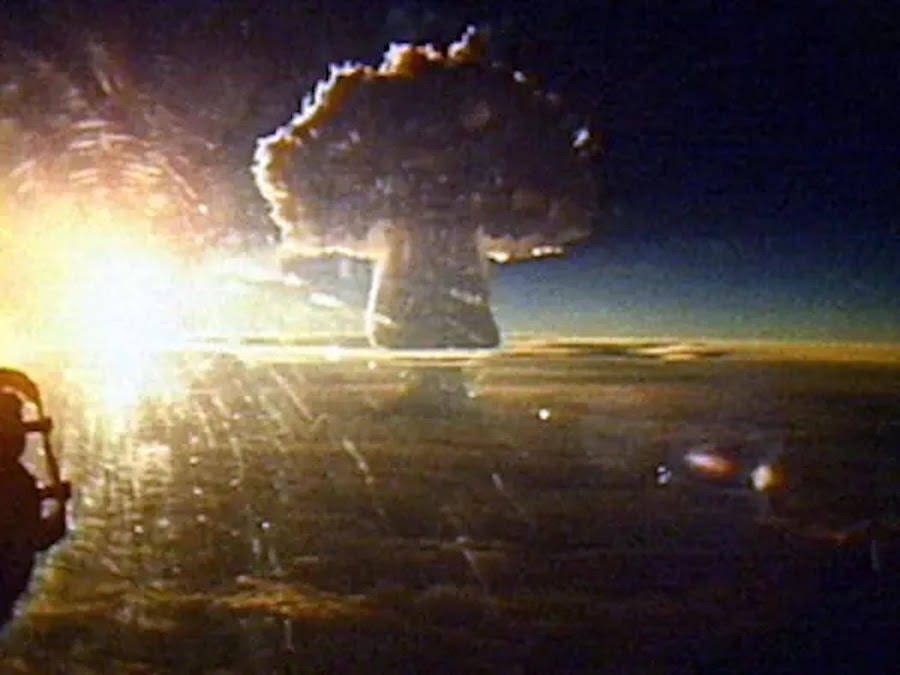
Wikimedia CommonsThe mushroom cloud resulting from the blast of the Tsar Bomba, the biggest nuclear bomb in history.
The idea was a simple one: Create a nuclear bomb that could place the Soviet Union ahead of the United States in the nuclear arms race.
The goal was to scare the rest of the world into submission, to make other countries fear the might of the Soviet Union. But the reality of Tsar Bomba was much more devastating than anyone could have ever imagined.
Tsar Bomba measured about 26 feet long, had a diameter of nearly seven feet, and weighed approximately 27 tons. It was similar in shape to the “Little Boy” and “Fat Man” bombs that the U.S. had used to devastate the Japanese cities of Hiroshima and Nagasaki at the end of World War II, but it was about 1,500 times more powerful than both of those weapons combined.
Heavier than four elephants, the Tsar Bomba was too big to fit inside even the largest Soviet aircraft, and officials feared that it was too dangerous for use in warfare. After witnessing the effects of its detonation over the Novaya Zemlya archipelago in northern Russia on October 30, 1961, officials realized they were right to worry about the biggest nuclear bomb ever detonated.
How Soviet Scientists Developed Tsar Bomba, The Biggest Nuclear Bomb Ever
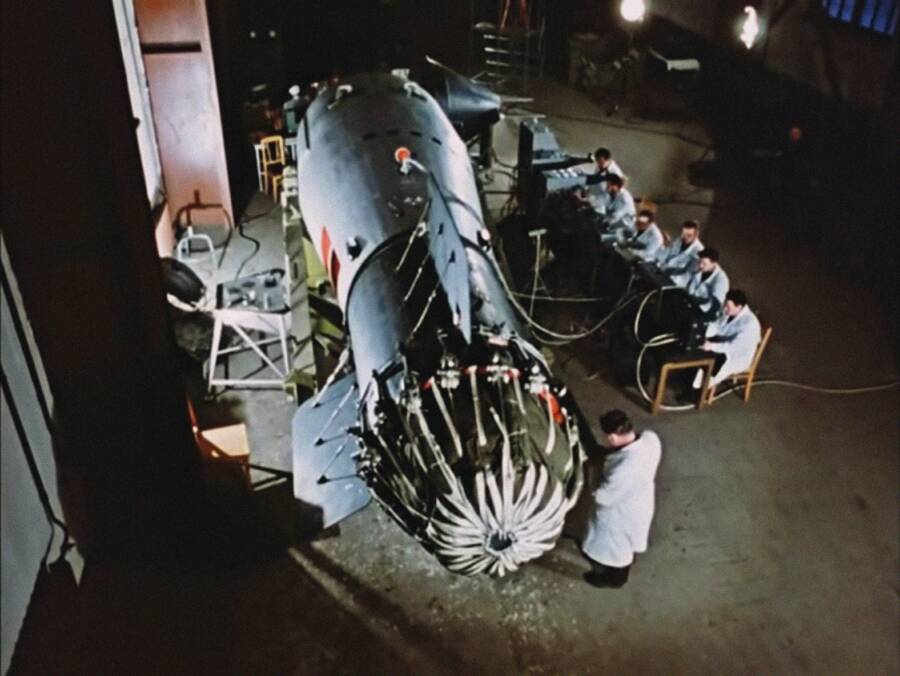
AlamyA group of Soviet scientists working on Tsar Bomba.
Following the creation of the atomic bomb by the U.S. during World War II, the Soviet Union wanted to develop its own nuclear capabilities.
By 1949, the Soviet Union had developed and tested their first nuclear device in modern-day Kazakhstan. The arms race between the U.S.S.R. and the U.S. was in full swing, and the Soviet Union was determined to develop a warhead that would overpower anything in the U.S. weapons arsenal.
Beginning in 1956, a team of Soviet scientists started working to design a powerful nuclear warhead. For years, the team developed prototypes and early relatives of what would later become the Tsar Bomba.
An early prototype was referred to as “Product 202.” Despite being commissioned to have a design power of 38 Mt, its tests didn’t reach that high. Officials scrapped the project in light of its shortcomings.
On June 23, 1960, the Resolution of the Council of Ministers of the U.S.S.R. was officially tasked with the creation of an ultra-powerful nuclear warhead. Then, on July 10, 1961, Soviet Premier Nikita Khrushchev met with the scientists about the new tests that they would need to perform.
Andrei Sakharov, a nuclear physicist behind the Tsar Bomba, wrote about the meeting in his 1990 memoirs, saying that Khrushchev told the scientists to resume tests in the autumn to “show the imperialists what we could do.” Though the scientists had been working on creating new concepts for weapons, they were surprised by the prospect of starting new tests so soon. Khrushchev stated that his motivation for resuming tests was political, as he believed that the international situation was “deteriorating.”
After this meeting, the scientists developed “Product 602” or “Item 602,” which would eventually lead to the creation of Tsar Bomba. The finished project was a bomb with a 100-megaton capacity (though this was considered too dangerous for a device that was only in the testing stage).
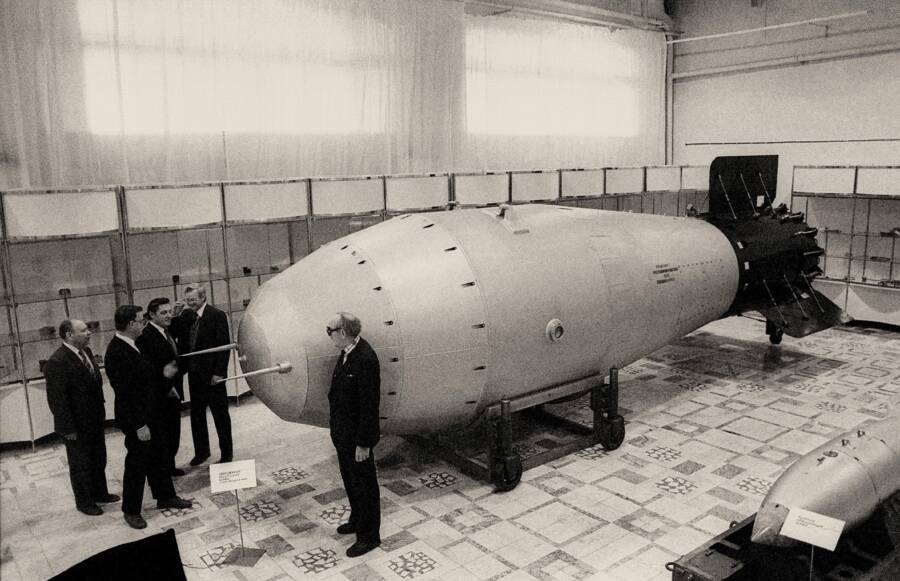
AlamyThe Tsar Bomba, surrounded by researchers.
Along with the Tsar Bomba, scientists needed to prepare an aircraft that was capable of transporting the world’s biggest nuclear bomb and safely evacuating the area during the detonation. The team decided to customize a Soviet Tu-95 bomber so it would be able to carry the nuclear device.
With that project complete, it was time to test Tsar Bomba.
The Detonation Of Tsar Bomba — And The Astonishing Size Of Its Blast
Soviet officials decided that Tsar Bomba would be detonated over Novaya Zemlya, a remote archipelago in the northern fringes of the U.S.S.R.
The modified Tu-95 bomber would fly beside a modified Tu-16, ready to monitor air samples and film the blast. To give the planes the best chance to evacuate, the Tsar Bomba would be dropped from a massive parachute, which would drift down to a predetermined height of about 13,000 feet before detonating. Hopefully, by then, the two planes would be approximately 30 miles away from the blast, at which point their chances of survival would be highest — chillingly, only a mere 50 percent.
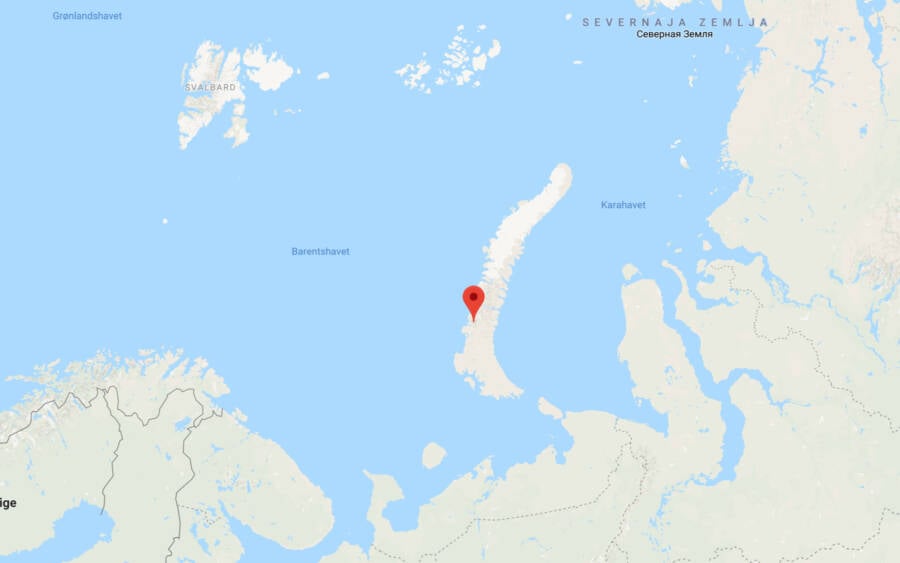
Google MapsNovaya Zemlya, the archipelago in northern Russia where Tsar Bomba was dropped.
At 11:32 a.m. Moscow time on October 30, 1961, Tsar Bomba detonated over Novaya Zemlya, creating a fireball that was five miles wide and that could be seen from 630 miles away. The resulting mushroom cloud was approximately 40 miles high, spreading over 60 miles from end to end.
The energy released was equivalent to the detonation of 57 million tons of TNT, more than the Hiroshima and Nagasaki bombs combined, and it was 10 times more powerful than all of the munitions expended during World War II combined. And the blast wave orbited the Earth three times.
Fortunately, no one was killed, as the sparsely populated region had been evacuated prior to the blast, but the explosion did cause damage. The village of Severny on Novaya Zemlya, 34 miles from the Tsar Bomba blast site, was completely devastated. In other towns within 100 miles of the blast, houses collapsed and roofs caved in after the detonation of the world’s biggest nuclear bomb. Shockingly, the explosion even shattered some windows 480 miles away.
A cameraman at the detonation recalled the scene:
“The clouds beneath the aircraft and in the distance were lit up by the powerful flash. The sea of light spread under the hatch and even clouds began to glow and became transparent. At that moment, our aircraft emerged from between two cloud layers and down below in the gap a huge bright orange ball was emerging. The ball was powerful and arrogant like Jupiter. Slowly and silently it crept upwards… Having broken through the thick layer of clouds it kept growing. It seemed to suck the whole Earth into it. The spectacle was fantastic, unreal, supernatural.”

Wikimedia CommonsA recreation of the Tsar Bomba.
The plane that had carried the bomb survived, but barely. The blast wave caused the aircraft to fall over 3,300 feet before the pilot was able to regain control. Still, for Soviet officials, the test was considered a success.
The Turbulent Aftermath Of The Detonation Of History’s Biggest Nuclear Bomb
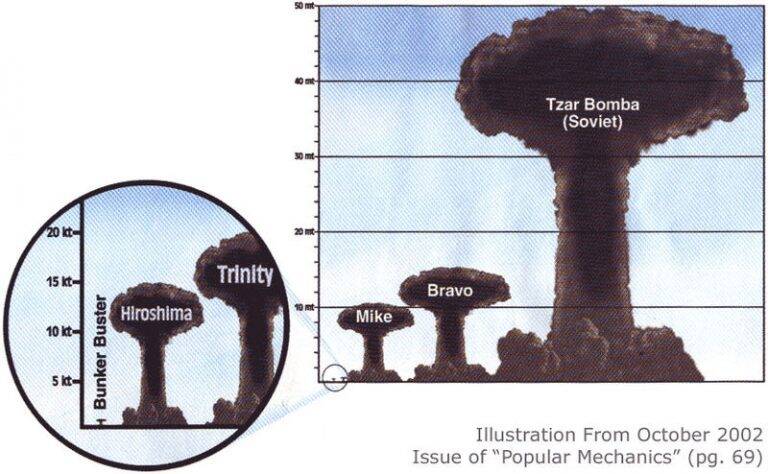
Nuclear MuseumA comparison between different nuclear weapons.
The Soviet Union was condemned by numerous countries, including the United States, Great Britain, and Sweden, for even testing Tsar Bomba.
“Our scientists calculated in advance that the force of the bomb would equal 50 million tons of TNT. That was in theory. In actual fact, the explosion turned out to be equivalent to 57 million tons,” Premier Khrushchev would later write in his 1974 memoirs. Even more shocking, Tsar Bomba would have likely been even more powerful in one of its earlier designs.
Despite the destruction it caused, there were a few positive things gleaned from the detonation of Tsar Bomba. The specialized engineering to ensure a low fallout was considered a success. Additionally, the fireball detonating from a great height in the air, rather than making direct contact with the Earth, led to a relatively low amount of radiation left behind on the land.
That said, later studies of glaciers in Novaya Zemlya reportedly found some elevated levels of radiation likely caused by Tsar Bomba and other nuclear warheads that were detonated in the area during the Cold War.
Even some scientists involved in the creation of Tsar Bomba expressed regrets about developing the biggest nuclear bomb in the world.
Physicist Andrei Sakharov went a step further, renouncing nuclear weapons and later trying to rid the world of them. He realized that, should a larger bomb be dropped, it might not be repelled from the Earth by its own blast wave like Tsar Bomba was — and could cause global devastation.
In the years following the blast, the U.S. and the U.S.S.R. signed a number of treaties limiting the development and testing of nuclear weapons due to the destructive power that these devices hold. It’s clearer than ever that they could threaten the whole world if not regulated and controlled.
After reading about the biggest nuclear bomb in history, Tsar Bomba, check out these pictures of the fall of the Soviet Union. Then, learn about Stanislav Petrov, the man who helped prevent the outbreak of nuclear war in 1983.





